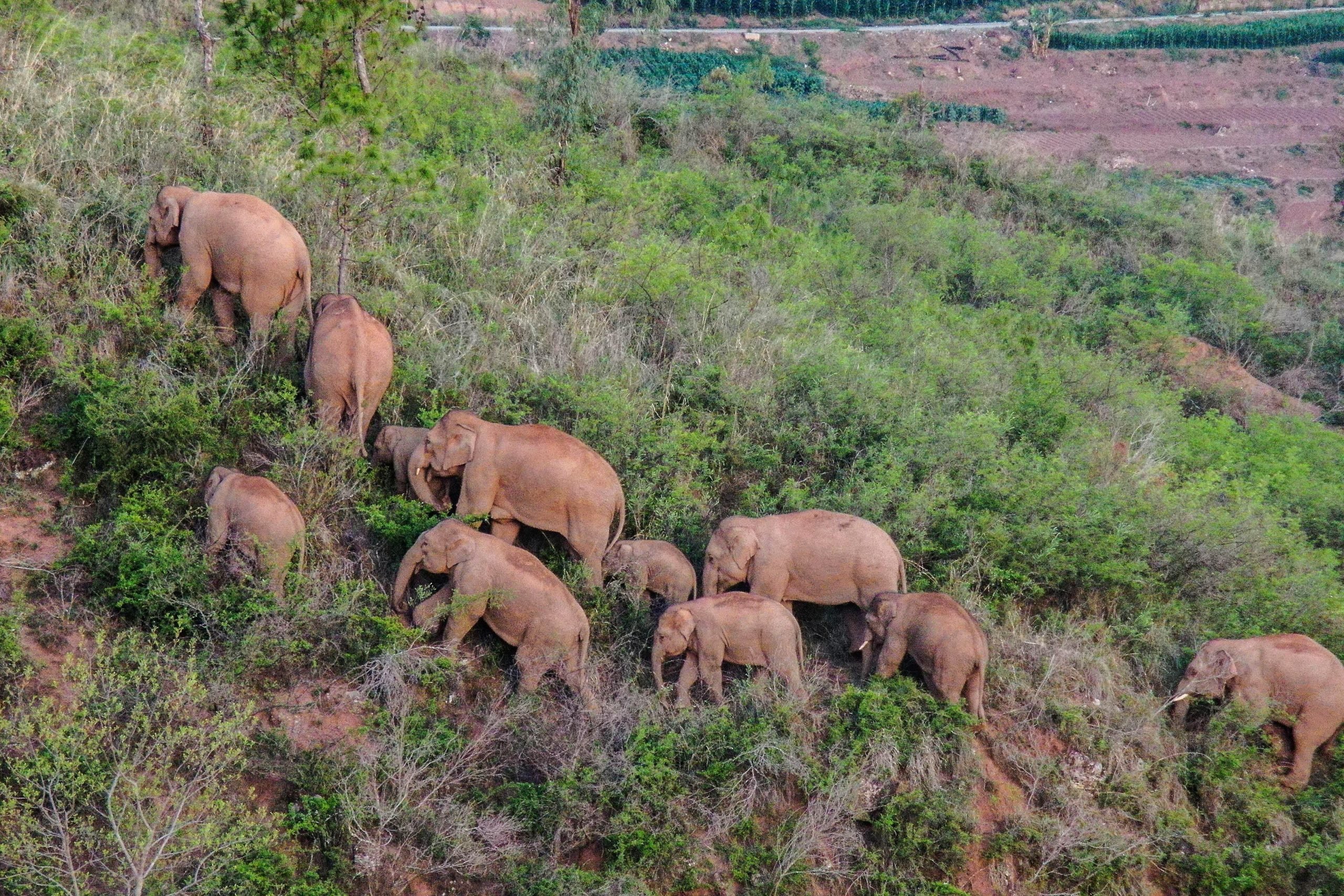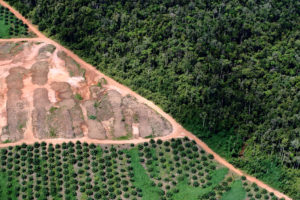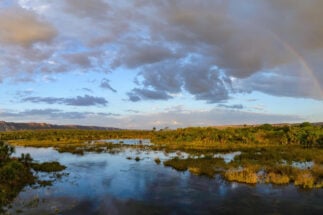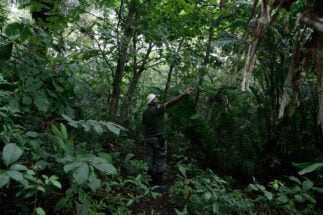If we needed more proof of our biodiversity crisis, a herd of wild elephants marching through China has been doing the job in the most heart-warming way possible. They’ve been walking north from Xishuangbanna for months, and their antics – raising babies, getting drunk, barging down doors and turning on taps to drink – have captivated the public. But so have the more serious reasons for their unusual migration, which local experts say is probably caused by the destruction of primary forests outside protected areas, forcing elephants to find new places to roam.
As the Asian elephants reached the city of Kunming, its local government deployed an array of tactics to keep the herd out, blocking roads and laying trails of pineapples and sweetcorn to divert them.
Kunming will be clearing away the pineapple trails to welcome world leaders as China hosts the COP15 UN biodiversity conference. A herd of wild elephants walking through Yunnan is a powerful symbol of the urgency that’s forcing our nature crisis onto the agenda of global leaders.
As National Geographic’s Explorer in Residence and an ecologist, I have first-hand experience of the consequences of the abuse of our natural world. While extractive industries destroy nature in search of short-term profit, more of us are recognising that a healthy natural world is essential to a safe and equitable future for humanity.
600%
Is how much the abundance of fish increases in protected areas of the ocean, on average, compared to unprotected ones
Political leaders are beginning to feel that urgency, too. At the G7 summit last month in the UK, global leaders issued a 2030 Nature Compact, putting nature alongside climate change at the heart of their agenda for the first time. It will help COP15 – alongside other talks like the climate COP26 in the UK – be part of a historic moment to collectively shape our response to the worst global crisis humanity has faced. Each meeting will be an opportunity for governments to set a clear direction of travel to guide public policy, finance, business and law.
The G7’s Nature Compact laid the foundations: now, its spirit needs to be reflected in a global deal for nature that will be signed under the Convention for Biological Diversity at COP15. The first detailed draft of this new global biodiversity framework was released earlier this month. It will need to mobilise new finance and strengthen domestic policies so we can protect the world’s remaining intact ecosystems, restore degraded habitats, and transform how we use our land and seas and produce our food. I know that protecting and restoring ecosystems works, because I have witnessed first-hand the spectacular recovery of biodiversity in areas protected from damaging human activities. In the ocean, for example, the abundance of fish increases on average 600% relative to unprotected areas nearby, and helps to replenish neighbouring areas.
This autumn’s summit marks a significant moment for China to show the world the role it intends to play in environmental leadership. It’s the first major environmental global summit that China has hosted, and it comes after making increasingly ambitious climate commitments. The environment is an area of productive competition and collaboration in an otherwise tense relationship with the US – so China knows the success of the biodiversity summit will have much wider implications.
US$700 billion
Is the annual nature finance gap – equivalent to less than 1% of the global GDP
If they build on the Nature Compact, G7 leaders have a strong chance of negotiating a solid deal. G7 trade and environment ministers have already agreed to meet before COP26 to take forward measures to tackle deforestation in global supply chains. Now, they need to come forward with meaningful proposals to regulate the supply of goods associated with unsustainable agriculture and fisheries, and provide market access for sustainably produced goods and food.
On protecting nature, the G7 nations have started well by making commitments to back a global goal of protecting 30% of land and sea by 2030, and to lead by example by implementing such “30×30” pledges in their own territories. Now, over 60 countries on the High Ambition Coalition for Nature and People endorse that global target, half of which are from lower- or middle-income countries from the global south. This 30×30 goal builds on the spirit of China’s own’s policy to protect a quarter of its land by drawing strict “red lines” around its most biodiverse and vulnerable land, protecting it from industrialisation and preserving it for nature instead. Next, the biodiversity COP must make sure that all these targets are embedded in the outcomes within a global agreement on nature, and translated into meaningful domestic law.
The implementation costs of 30×30 – an estimated US$140 billion per year – are less than what the world spends today on video games
It is also welcome to see the rights of Indigenous Peoples recognised as a central principle in the adoption of nature targets: there’s overwhelming evidence that indigenous peoples and local communities can be more effective at protecting biodiversity than most conventional conservation strategies. Next, they need to be included in processes to set and implement targets for nature, to make sure the deal works for people too.
The key to making a success of this? Money. Many of the most biodiverse countries in the world are developing countries, and they need help to fund the transition to a 30×30 world and meet biodiversity goals. This means the G7 needs to make solid commitments for more funding. China needs to broker a deal to fill the estimated US$700 billion annual nature finance gap – less than 1% of the global GDP – that needs to be met over the next decade, agreeing to a combination of enhanced public finance, and reform of financial flows in the private sector. That needs to be complemented with strong domestic action to ensure bilateral aid spending is fully aligned with the global mission of halting and reversing biodiversity loss by 2030.
If China can make a success of this year’s biodiversity summit, it will be remembered for brokering a world-changing global agreement
We are told that we cannot afford to protect more of nature, but the implementation costs of 30×30 – an estimated US$140 billion per year – are less than what the world spends today on video games, and only a fraction of the money governments use to subsidise industries that destroy nature. The money is there, but astonishingly, we use it to destroy our life support system instead of to preserve it.
The destruction of natural habitats has a knack of cutting through to the public: citizens care deeply about forests burning, animals dying, and species becoming extinct. That makes nature a legacy issue for leaders – and they’ll need to focus attention on the nature crisis at every G7, G20 and multilateral forum to make sure that legacy is a positive one.
If China can make a success of this year’s biodiversity summit, it will be remembered for brokering a world-changing global agreement. If it fails, 2021 will be the year we remember a herd of elephants crossing a country in search of a home.








